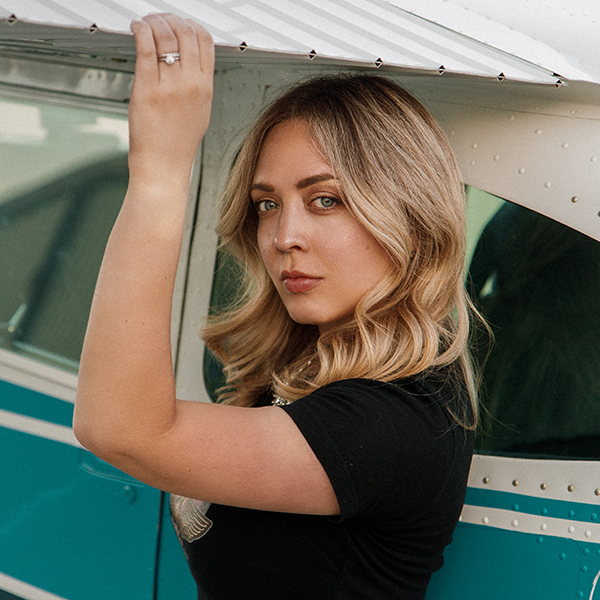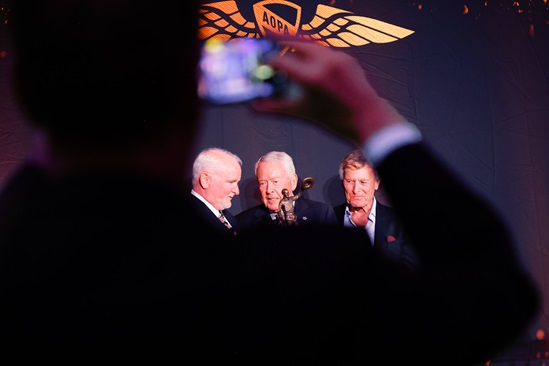Thinking of buying?
AOPA resources are key to a successful transaction

If you are just starting your search for the perfect aircraft, AOPA can help you find aircraft with the capabilities, performance, and features that fit the kind of flying you plan to do. AOPA’s guide for first-time buyers can help you establish a realistic budget, apply and get approved for financing, negotiate your purchase, and close on your first aircraft (finance.aopa.org/aviation-finance/first-time-buyers).
The AOPA Aircraft Guide lists more than 88 aircraft that are currently in production and includes model overviews, specifications, performance, and airspeeds. Use the AOPA Aircraft Guide to find the ideal aircraft for you (aopa.org/aircraftguide).
AOPA’s Operating Cost Calculator will help you estimate the operating cost for a broad range of aircraft by looking at each area of cost and figuring out annual and per-flight-hour expenses (aopa.org/go-fly/aircraft-and-ownership/operating-costs-calculator).
The AOPA Aircraft Valuation Service can be used as a starting point that provides guidance on the retail value for selected aircraft, based in part on equipment, time since overhaul, and other significant factors (aopa.org/vref).
Purchasing an aircraft is a major investment that should be thoroughly considered. The tips and resources from AOPA can help you feel confident and ready to make your purchase.
5 quick tips to prepare for your purchase
- Define your mission first. How do you envision using the airplane? Are you going to travel someplace? With other people? How long are these trips going to be? At what time of year? These will define the type of aircraft that fits your need best.
- Define your intended aircraft’s support community. Who owns the same aircraft at your local airport? Does that airplane have an associated club or online community? Tap into those human resources to get real world intelligence.
- Define the aircraft’s true cost. What is the reserve? How easy is it to obtain parts? What’s the access like to a mechanic who is an expert on your make and model? What’s your airplane’s down time going to be based on mechanic and parts availability?
- Define whether a used or a new airplane is your best value. If you own your own business and you can also utilize bonus depreciation to write the purchase off as a business expense, and if your price includes a manufacturer’s warranty for a new airplane, that slightly higher cost may mitigate the issues raised in point 3.
- Define your financing options. How would your return compare between an all-cash deal and taking a loan while investing the cash? What’s your comfort level in having cash flow and leverage versus owning an aircraft outright? Where you stand on the leverage risk-tolerance scale focuses how you’re willing to pay for the airplane.
—Adam Meredith, president, AOPA Finance
Legally Speaking
TSA and the FAA
Updated regulations that may affect you
By Chad Mayer, Pilot Protection Services
The regulations governing FAA investigations and enforcement actions are codified in 14 CFR Part 13. In a recent rulemaking, the FAA updated these regulations to fix inconsistencies and reflect changes in organizational structure and authorities. For example, the old 14 CFR 13.29, which pertained to FAA enforcement actions involving airport security screening or checked baggage weapons violations, has been removed because the Transportation Security Administration (TSA) now handles these instead of the FAA.
More relevant to general aviation pilots is a change to the new 13.5(g), which governs what actions the FAA may take if its investigation substantiates allegations of a violation. As proposed, the new 13.5(g) (formerly 13.5(j)) referenced only enforcement actions. As a result of feedback from commenters, the FAA noted in the final rule that it “did not intend to limit its ability to choose an appropriate response…including taking administrative or compliance action.” The FAA changed the proposed language to reflect the discretion it has under its compliance program and other guidance, and the final version of 13.5(g) reads: “If the investigation substantiates the allegations set forth in the complaint, the Administrator may take action in accordance with applicable law and FAA policy.”
FAA investigations come in many shapes and sizes, but one piece of advice applies to them all: before responding to an FAA investigation, it is advisable to consult with experienced aviation counsel. AOPA’s Legal Services Plan can be reached at 800-872-2672.
Chad Mayer is an in-house attorney with AOPA’s Legal Services Plan and a commercial pilot, remote pilot, and an advanced/instrument ground instructor. The AOPA Legal Services plan is offered as part of AOPA’s Pilot Protection Services.
Aviation Finance
Adam answers
By Adam Meredith, President, AOPA Finance
Q Does AOPA have recommendations for companies that conduct prebuy inspections?
A Unfortunately, AOPA does not have a list of prebuy shops; however, we do have some recommendations for the selection process. Probably the most important thing is to not use the shop that’s been currently managing/doing maintenance—for obvious checks-and-balances reasons. Check with your applicable aircraft owner’s group, such as the Cessna Pilots Association or the American Bonanza Society. Ideally, what you’re looking for is someone who primarily or frequently does work on your specific make and model of aircraft.
aopafinance.org
800-62-PLANE (75263)



